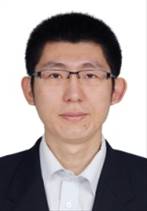Institute of Powder Metallurgy
Advanced Energy Materials Laboratory
【Laboratory Introduction】
Advanced Energy Materials Laboratory is affiliated to the Institute of Powder Metallurgy, University of Science and Technology Beijing, with a total of 5 teachers. The research center takes "advanced energy materials and devices" as the overall research direction, aims at solving basic research and application problems, studies the theoretical basis of advanced energy materials and some scientific problems in material preparation, and solves the important fundamental issue of advanced energy materials in applications. The specific research directions include: key materials and devices for lithium-ion batteries, key materials and devices for all-solid-state batteries, key materials and devices for sodium-ion batteries, key materials and devices for magnesium-ion batteries, key materials and devices for zinc-ion batteries, and key materials for supercapacitors, composite dielectric energy storage materials and devices, polymer matrix composites, functional ceramic materials, and the like. It has undertaken many projects such as the key projects of the National Natural Science Foundation, surface projects, key projects of the Beijing Natural Science Foundation, and major national research and development plans. It has established friendly research cooperation with international counterparts in universities and research institutions in the United States, Britain, Germany, Japan, etc. At the same time, it has established long-term stable and good cooperative relations with many domestic enterprises.
【Team members introduction】
|
|
|
||
Lizhen Fan |
Yongchang Liu |
Penghao Hu |
Pingge He |
Xudong Zhao |
Lizhen Fan Professor, doctoral tutor
Yongchang Liu Associate professor, master Instructor
Penghao Hu Associate professor, master Instructor
Pingge He Associate professor, master Instructor
Xudong Zhao assistant professor
【Research interests and achievements】
1、Key materials and devices for all-solid-state batteries
All solid-state batteries use solid electrolytes instead of traditional organic electrolytes, which are expected to fundamentally solve the problem of battery safety. It is an ideal chemical power source for electric vehicles and large-scale energy sto rage. In order to achieve high energy density and long service life, and to promote the practical use of all solid-state batteries, the development of battery critical materials and optimization of performance is an urgent task.
This lab is dedicated to the study of solid-state electrolytes with high room temperature ionic conductivity and electrochemical stability for all-solid-state lithium batteries, high-energy electrode materials for all-solid-state batteries, and improve electrode/solid-state electrolyte interface compatibility. High-density, high-ionic conductivity oxide ceramic solid electrolyte was developed by optimizing the synthesis process; polymer-based composite solid electrolyte with high ion conductivity, high mechanical properties, wide electrochemical window, and inhibition of lithium branch Crystal grown were developed by doping of inorganic active filler; A three-dimensional non-dendritic lithium metal/sodium metal anode was prepared by melting method; based on the research of key materials of all-solid-state batteries, all-solid-state battery devices used in a wide temperature range were developed. The work is currently supported by the National Natural Science Foundation of China, the Beijing Natural Science Fund Key Project, and the National Major Research and Development Program, more than 40 papers related to SCI were published in internationally renowned journals such as Phys. Rev. Lett., Adv Energy Mater., Adv. Funct. Mater., Nano Energy, ACS Appl. Mater. Interfaces, J. Electrochem. Soc. etc.

2、Key materials and devices for sodium ion batteries
Sodium-ion batteries have important application prospects in the field of large-scale energy storage due to resource advantages. However, the larger radius and mass of sodium ions limit its reversible reaction with electrode materials. Developing a matrix material capable of rapidly and stably storing sodium is one of the keys to improving the performance of sodium ion batteries. In addition, how to rationally optimize the electrolyte and match the positive and negative materials to achieve high-performance, high-safety, low-cost sodium-ion battery construction, and it is an urgent problem to be brought to market as soon as possible.
This lab has long been committed to designing porous micro-nano electrode materials to enhance sodium ions battery performance for key scientific and technical problems such as slow ion mobility, insufficient cycle life, low energy density, and unclear mechanism of sodium storage in sodium ion batteries, under the premise of understanding the structure-activity relationship of the material and the mechanism of electrochemical sodium storage, matching the positive and negative electrodes to realize the sodium ion full-cell construction with commercial potential. More than 30 related results have been published in authoritative journals such as Adv. Mater., Nano Lett., Adv. Funct. Mater., Energy Storage Mater., Nano Res., J. Mater. Chem. A. etc.
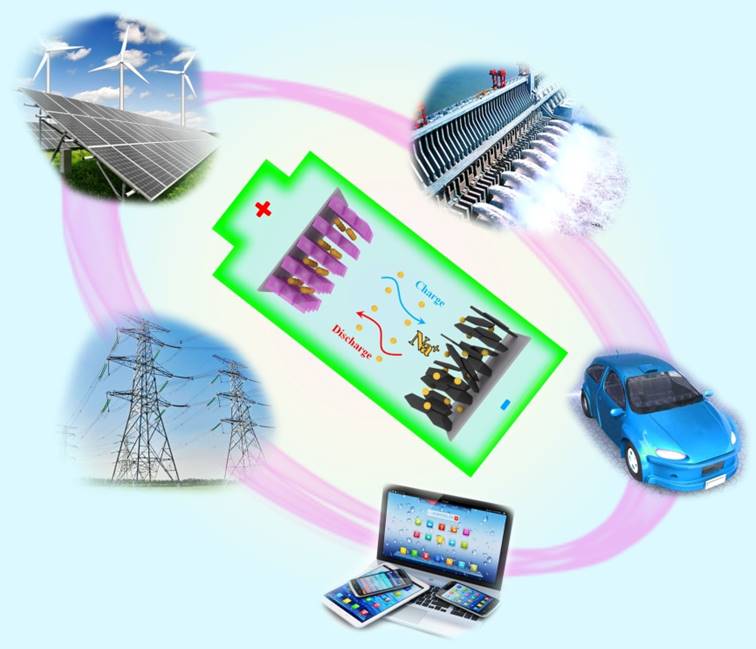
The working principle and potential use of sodium ion battery
3、Key materials and devices for magnesium ion batteries
Magnesium-ion batteries are rich in resources, low in price, safe and environmentally friendly, and have high energy density. They are "green" secondary batteries with promising applications. However, it is limited by the lack of positive electrode materials for reversible deintercalation/embedding of magnesium ions, poor compatibility between electrolyte and metal magnesium anodes, and research on magnesium ion batteries is still in its infancy.
This lab aims at the two difficulties faced by magnesium ion batteries, aiming to develop a new type of magnesium storage cathode material, realize rapid, stable reversible deintercalation/embedding of magnesium ions, and understand its magnesium storage mechanism to clarify its structure-activity relationship; At the same time, the high-ionic conductivity and high mechanical properties of magnesium ion solid electrolyte materials are designed and prepared to effectively inhibit the passivation film and dendrite growth of the magnesium metal anode surface, and to analyze the magnesium ion conduction mechanism of the electrolyte; Then, an effective method for reducing the interface impedance is obtained by designing the interface transition layer, clarifying the interface regulation mechanism, establishing an interface ion transport model, and achieving stable compatibility of the electrode/electrolyte; Finally, the integrated cathode material, solid electrolyte, and metal magnesium anode are assembled in an integrated manner to assemble a high-performance, low-cost, high-safety all-solid-state magnesium ion battery, which promotes the development of magnesium battery technology and makes it practically plays an important role in new energy storage field. Related results were published in Mater. Horiz., J. Mater. Chem. A, Nanoscale, J. Power Sources and other international authoritative journals.
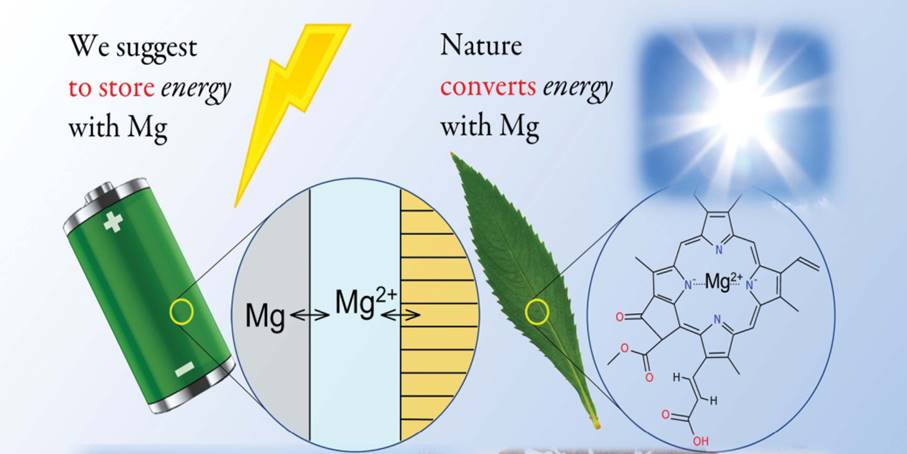
Schematic of “green” magnesium ion battery
4、Key materials and devices for lithium-ion batteries
Lithium battery system is favored as an efficient energy storage device. It has been widely used in portable electronic devices (mobile phones, digital cameras, notebook computers, etc.) and is currently being applied to new energy electric vehicles, smart grids and clean energy (wind energy and Solar energy) storage areas, thereby reducing human dependence on fossil energy, reducing carbon dioxide and related waste emissions, reducing the impact of greenhouse gases on the global climate and air pollution to cities.
This laboratory mainly studies the preparation, synthesis and modification of materials such as positive and negative electrodes, electrolytes and separators for lithium-ion batteries, and the relationship between the structure, morphology, electrochemical properties and processing properties of the materials. By improving the material synthesis technology, coating and doping technology, shape and particle size control technology, etc. to improve thermal stability, improve rate charge and discharge performance, improve high and low temperature charge and discharge performance, and further improve material capacity and efficiency, by controlling the material morphology to improve the tap density, improve the electrode processability of the material, uniform product uniformity and batch stability technology. The work is currently supported by projects such as the National 973 Program and the National Natural Science Foundation, and is published in internationally renowned publications such as Adv. Mater., Adv Funct. Mater., Electrochem. Commun., Nanoscale, J. Power Sources, Electrochim. Acta. More than 40 related papers were included and 10 patents were granted.
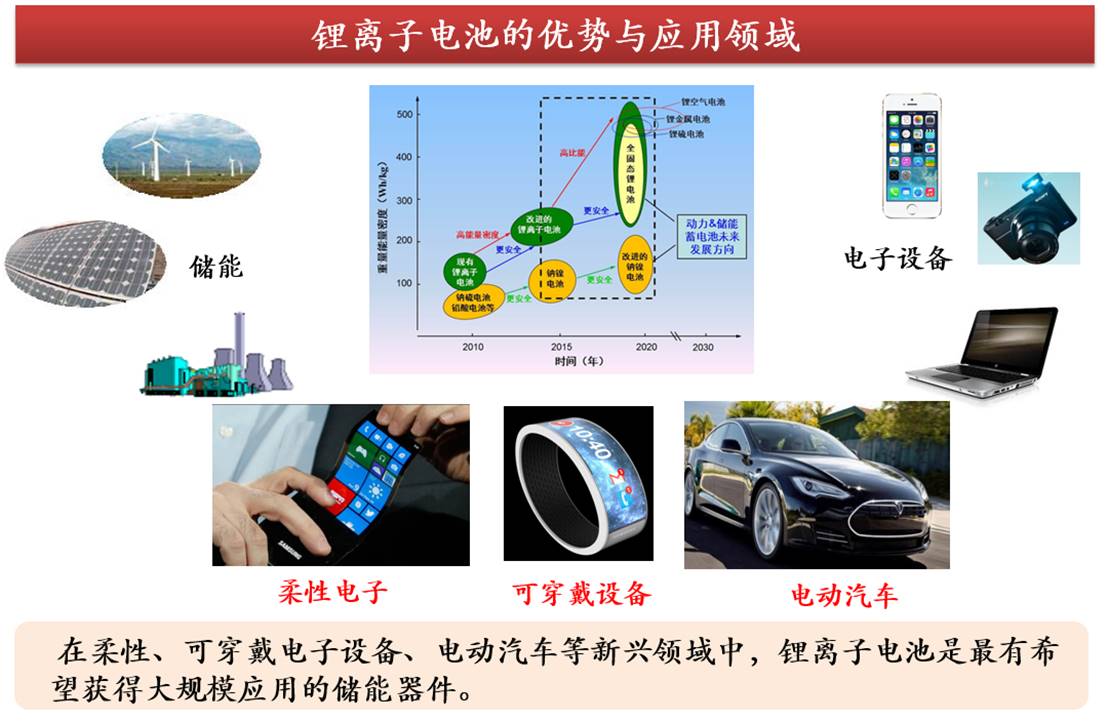
5、Key materials and devices for supercapacitor
Supercapacitor is a new type of green energy storage device with high specific power and long cycle life. It has great application value and market potential in many fields such as power, consumer electronics, defense, communication, new energy vehicles, etc. The irreplaceable role of traditional capacitors has received wide attention from countries around the world. The supercapacitor has a lower specific energy than a secondary battery. Electrode materials are one of the important factors affecting the electrochemical performance of supercapacitors. Therefore, the development of electrode materials with high specific energy, high specific power and long cycle life is one of the research focuses of supercapacitors.
This lab is dedicated to the study of the structure, composition control, surface modification of nanocarbon materials. It is the first to propose a low-temperature green synthetic porous carbon material with biomass derivatives as precursors; the block-shaped porous cast carbon was first used to load an active material having a tantalum capacitor; The microstructure, chemical composition, pore structure and other microscopic properties of carbon fiber, porous carbon and graphene composites and their structure-activity relationship were studied systematically. Electrochemical methods, self-assembly methods, reverse microemulsion methods, etc. can be used to control the synthesis of electrochemically exfoliated graphene composites with high specific volume, three-dimensional graphene composites, carbon fiber composites, and the like. The work has been supported by the National Natural Science Foundation of China, the Beijing Science and Technology New Star, the New Century Excellent Talents Program of the Ministry of Education, and the basic research business fees of the Ministry of Education. More than 30 papers in SCI have been published in internationally renowned publications such as Adv. Mater., Adv. Funct. Mater., Energy Storage Mater., J Mater. Chem. A, Carbon, Electrochem. Commun., and 6 patents have been granted.
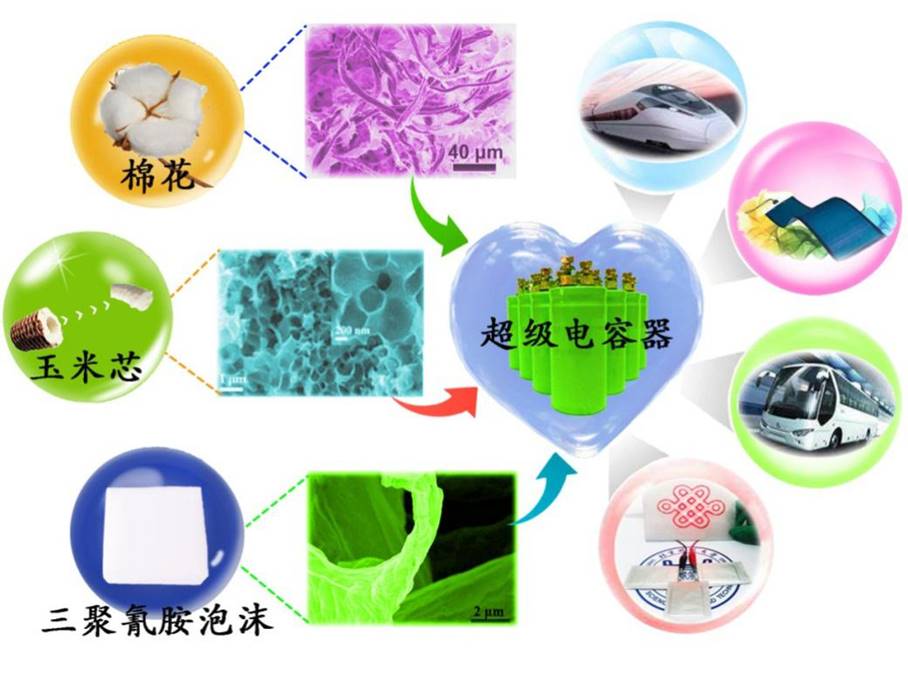
Research and Application of Supercapacitor Electrode Materials
6、High energy storage dielectric material
With ultra-high power density and withstand voltage, dielectric capacitors are an integral component of pulsed power devices. The research group combines the high dielectric constant of inorganic materials with the high dielectric strength of polymers to prepare polymer-based composites in order to achieve high dielectric constant and high dielectric strength at the same time, and achieve an effective improvement of energy density. High-power and high-energy-density dielectric capacitors based on polymer-based composite films are designed to develop their role in defense (electromagnetic ejection, pulse weapons, etc.) and civilian (smart grid, electric vehicles, etc.). Related works are published in Adv. Funct. Mater., J. Mater. Chem. A and other publications.
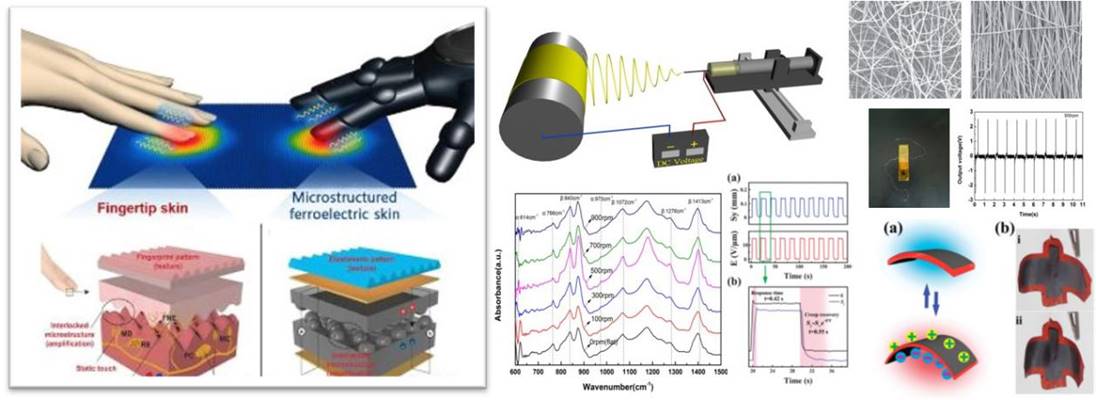
7、Flexible electroactive material
Flexible electroactive materials mainly comprise a flexible piezoelectric material and a dielectric elastomer material of a polymer matrix, which can be used to make soft, lightweight, high energy conversion efficiency sensors, actuators or generators. The research team improve the piezoelectric response of the piezoelectric polymer and improve the aging problems by preparing inorganic/polymer composite piezoelectric materials. The piezoelectric film is further fabricated into a simple miniaturized device to test its performance in piezoelectric sensors, drivers, energy generator collectors, and the like, and to develop its application potential in wearable electronic devices. Related works are published in the journals of Comp. Sci. Tech., J. Mater. Chem. C, Mater. Lett. etc.

8、Polymer based biomaterial
Biomaterials are a class of natural or synthetic special functional materials used to contact and interact with living systems, and to diagnose, treat, replace, or induce regeneration of cells, tissues, and organs, also known as biomedical materials. The research group focuses on the application of polymer-based composite materials in the induction of regeneration in vivo and the promotion of tissue damage healing, combined with the preparation and modification of inorganic nanomaterials, and the design of composite topologies. the team intends to develop a film material with good regenerative function and biocompatibility. Related works are published in ACS Nano, J. Mater. Chem. A and other publications.
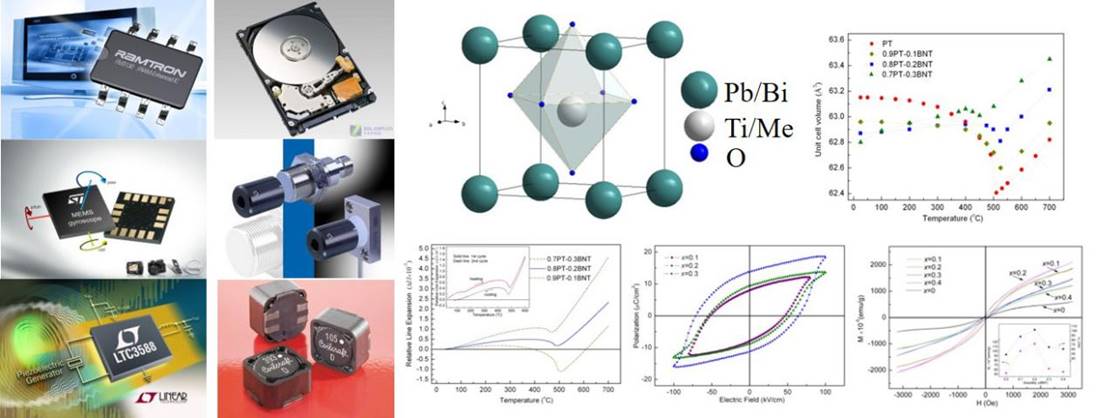
9、Functional ceramic material
Ceramic materials with ferroelectric and ferromagnetic properties at the same time can play a role in more fields through the synergistic coupling of iron. The research group selected lead titanate compounds with abnormal thermal expansion behavior as research objects, and developed multiferroic ceramic materials with both ferroelectric and ferromagnetic properties. A variety of high-iron properties of multi-ferrous ceramic materials have been produced, with excellent ferroelectric and piezoelectric properties, and some materials have zero expansion characteristics. The mechanism of the influence of structure on performance was studied by means of structural refinement and maximum entropy calculation. Related works are published in J. Am. Chem. Soc., J. Mater. Chem. A, J. Am. Ceram. Soc. and other publications.
【Research projects】
l National Natural Science Foundation of China (key project): Key issues for solid electrolytes in all solid-state lithium batteries, 3.476 million, 2016-2020; National key R&D plan: high-energy solid-state lithium battery technology, 728,000, 2018-2020;
l Beijing Natural Science Foundation-Haidian Original Innovation Joint Fund (key project): Synthesis of high performance flexible electrolyte and its application in solid state lithium battery,990,000, 2017-2020;
l National key R&D plan Intergovernmental international science and technology innovation cooperation key project: Research on magnesium storage behavior above ferroelectric phase transition temperature, 1.67 million, 2018-2020;
l Equipment pre-research: high security organic solid electrolyte material technology, 500,000, 2017-2020;
l Equipment pre-research: wide voltage window inorganic solid electrolyte material technology, 2 million, 2017-2020;
l National Natural Science Foundation of China (surface project): preparation, modification and superstructure-level capacitance characteristics of nano-porous carbon/metal oxide composites, 800,000, 2014-2017;
l National Natural Science Foundation of China (surface project): Flexible supercapacitor based on biomass derivative/graphene multi-stage composite structure, 746,000, 2016-2019;
l National Natural Science Foundation of China (surface project): The mechanism of action of polymer electrolytes and positive and negative electrodes in full-solid high energy lithium-ion batteries, 600,000, 2012-2015;
l National Natural Science Foundation of China (Youth Project): Research on the effect of barium titanate/polymer functional layer and its combined structure on energy storage of composite dielectrics, 250,000, 2015-2017;
l National Key Basic Research and Development Program (973 Project): Controllable preparation and application mechanism of new three-dimensional nano-current collector materials and three-dimensional composite electrodes, 832,000, 2013-2017;
l National Key Basic Research and Development Program (973 Project): Key scientific issues in flexible energy storage nanomaterials, 1 million, 2015-2019;
l National Key Basic Research and Development Program (973 Project): Inorganic/Polymer Composite Dielectric Interface Control and High Energy Storage Mechanism, 782,000, 2015-2019;
l National Science and Technology Basic Condition Platform Construction Project: Energy Material Data Sharing Resource Node Planning and Framework Construction, 500,000, 2009-2012;
l Beijing Science and Technology Plan Project: Research on Key Technologies of Solid State Lithium Metal Protection, 850,000, 2017-2018;
l The basic research business fee of the central colleges and universities: high-performance sodium ion battery construction based on self-supporting micro-nano electrode materials, 100,000, 2017-2018;
l Postdoctoral Innovative Talent Support Program: Construction of high energy density sodium ion full battery and design of self-supporting electrode materials, 600,000, 2016-2018;
l Yingdong Huo Excellent Young Teacher Application Project of the Ministry of Education: High-performance conductive polymer supercapacitor electrode material and device application, USD 20,000, 2010-2012;
l Basic research business expenses of the Ministry of Education: high-performance supercapacitor electrode materials and device design, 500,000, 2009-2014;
l Beijing Municipal Party Committee Organization Department: Preparation and application of high specific capacity supercapacitor electrode materials, 50,000, 2011-2012;
l Basic research business fees of central colleges and universities: Basic research on improving the energy storage density of composite dielectric film by one-dimensional nanostructured ceramic filler, 100,000, 2015-2016;
l Xingtai High-tech Industrial Development Zone: New energy and new material product development, 1.5 million, 2010-2012;
l Qingtao (Kunshan) Energy Development Co., Ltd.: Preparation technology of lithium ion battery electrode materials (patent implementation license), 400,000, 2016-2017.
【Research team building】
Research and education are equally important, and high-level talents are cultivated for the country. With a solid scientific research base and high-level scientific research results, students of all levels are trained at different levels. It will enable undergraduates to pursue truth-seeking and innovation in their thinking, and to form a system on the knowledge system; enable graduate students to obtain a comprehensive scientific concept, experimental view, and methodology; enable doctoral students to acquire all-round and in-depth training of innovative ideas, methods and skills, and become a high-level talent with the ability to “really” independently engage in “innovative” research work.
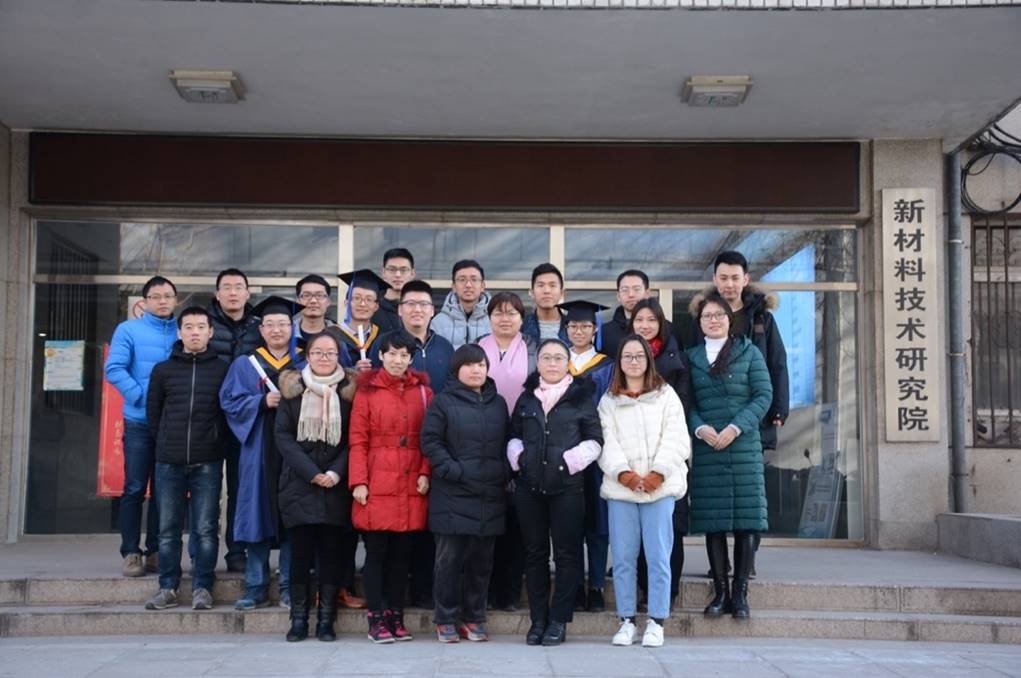
Group photo of teachers and students of Advanced Energy Materials Laboratory

Autumn Tour for teachers and students of Laboratory of Advanced
Energy Materials
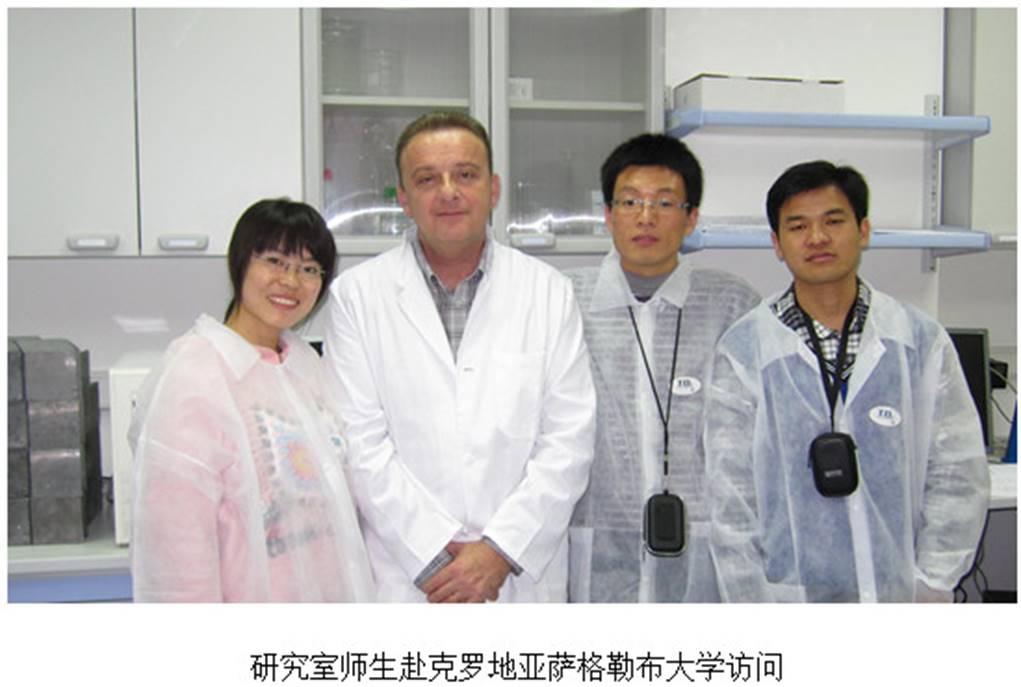


Advanced material synthesis equipment in laboratory 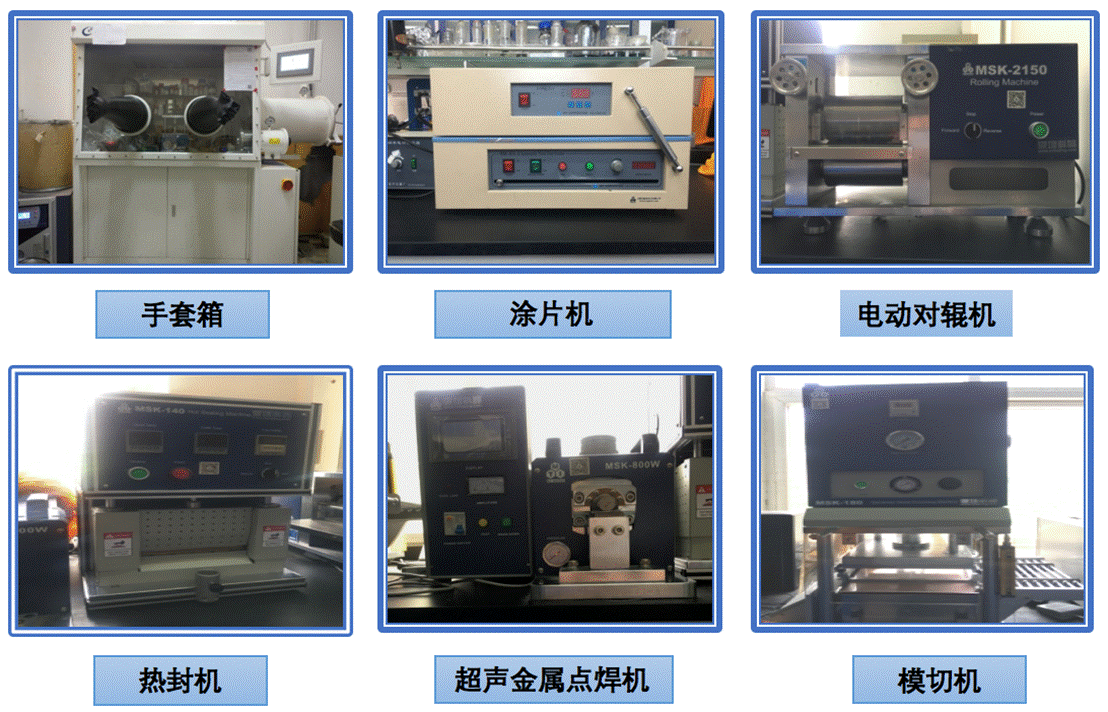
Advanced battery assembly equipment in laboratory 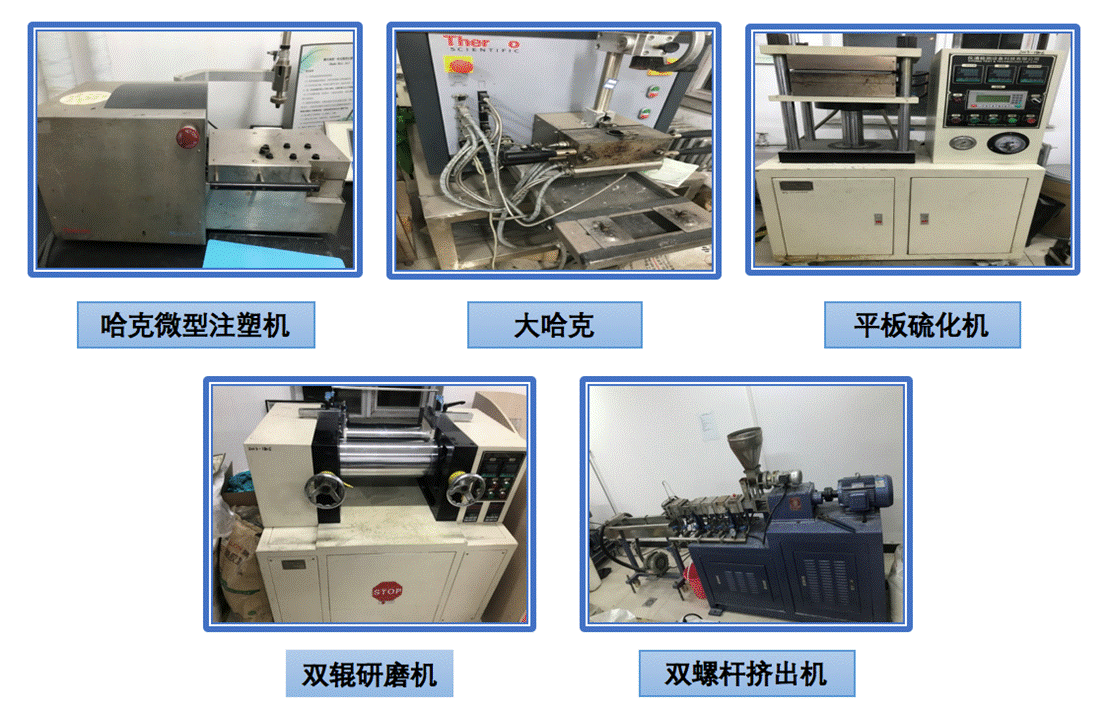
Polymer-based composite material synthesis equipment in laboratory
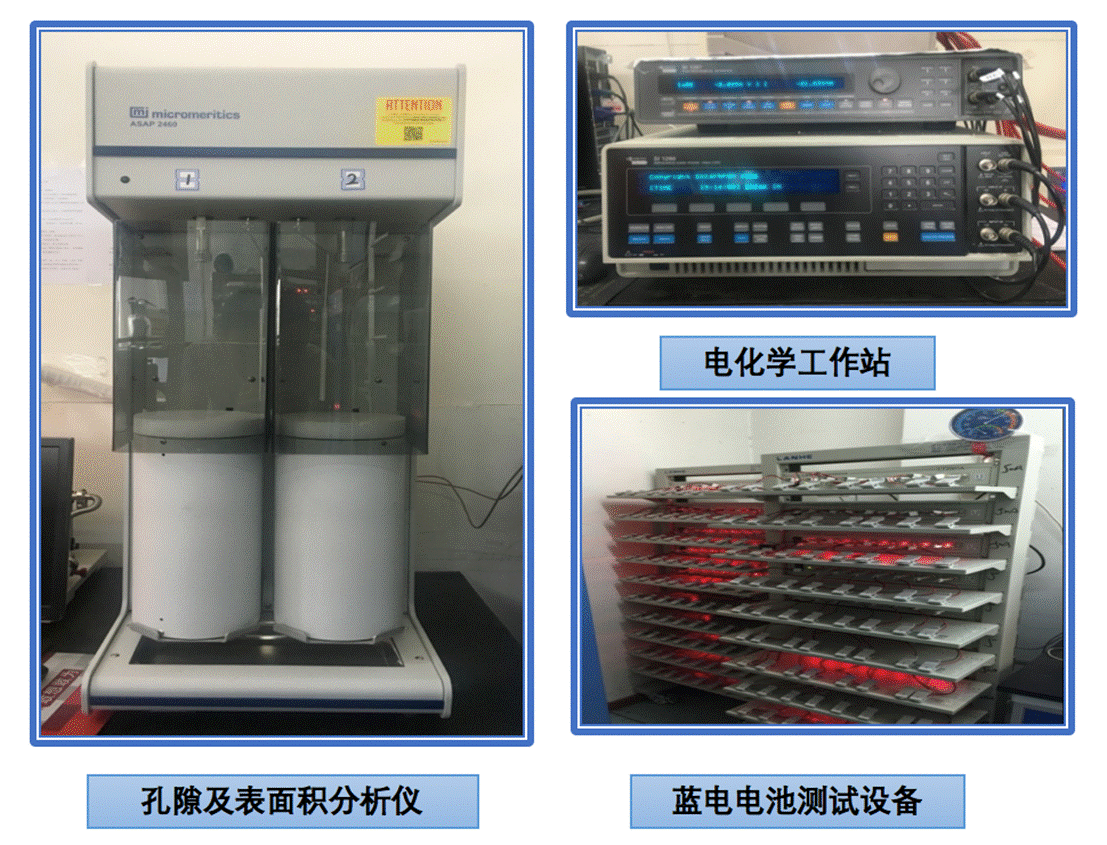
Advanced structural characterization and electrochemical test equipment in laboratory







